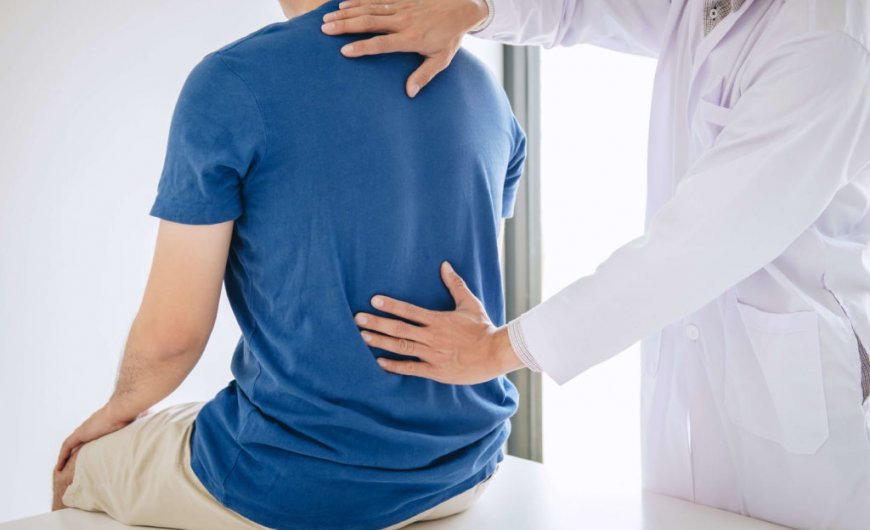2,500 people sustain a spinal cord injury each year
Recovery from a SCI often requires long-term hospitalisation and rehabilitation. As well as occupational therapy which helps with everyday tasks, physical therapy will likely be a very important part of rehabilitation with specialists working with patients to prevent muscle wasting and contractures, and to help you retrain other muscles to aid in mobility and movement.
A traumatic event that results in a SCI is devastating for the patient and their family. The healthcare team will help educate the family on how to help care for the patient at home and understand the specific problems that require immediate medical attention.
People who have serious long-term effects from a spinal cord injury can also develop a number of other complications such as skin sores or infections and severe muscle cramps or spasm. This is where specialist equipment can help make daily life more comfortable.
SCI rehabilitation is an ongoing process. Home aids and modifications are among the most important things to overcome environmental barriers for patients with spinal cord injury. Specially designed equipment can be tailored to the patient help to elevate a sense of independence and self-confidence.

Helping the user adjust to their new way of living
Spinal cord injured patients have a high risk of developing pressure injuries due to motor and sensory impairments, immobility, changes in skin composition, and prolonged hospital stays. It’s important to be able to manage the pressure areas to avoid re-hospitalisation, increased care needs and a decline in the patient’s wellbeing and health.
Pressure injuries can be unpleasant, upsetting and challenging to treat. Therefore, a range of techniques is used to prevent them developing in the first place. These include:
- regularly changing a person's position
- using equipment to protect vulnerable parts of the body
We've selected these articles to help you find out more about the concerns with pressure injuries and how shower commode chairs can help manage the condition.
Managing pressure in shower commode chairs, particularly in the case of spinal injury patients >>

Challenges faced by spinal injury patients using shower commode chairs particularly in relation to managing pressure >>

Watch our presentation on moulded shower seats

FACT: Treating pressure damage costs the NHS more than £3.8m every day*
Each patient will require a different level of support and home care equipment needs.
Wealden Rehab has worked with Occupational Therapists and carers over many years and is accustomed to accommodating end users with equipment to help with their daily challenges. We hope these resources help with their rehabilitation journey.
Equipment can also provide protection against injury, protection for the skin, provide postural support and help to prevent injury to the caregiver.
The majority of SCI's are due to preventable trauma and symptoms depend on severity of injury and its location on the spinal cord.
- Falls
- Sports injuries
- Diving accidents
- Trampoline accidents
- Violence (gunshot or stab wounds)
- Infections that form an abscess on the spinal cord
- Birth injuries, which typically affect the spinal cord in the neck area
Good equipment will reduce the risk to the individual of developing secondary conditions e.g.
- DVT
- UTI's
- Muscle Spasms
- osteoporosis
- pressure ulcers
- chronic pain
- respiratory complication
Equipment for Independence is generally provided by social services and equipment for nursing by the NHS - equipment provided by these normally comes from the local integrated equipment stores (ICES) and is on loan to the person requiring it for as long as it is needed. Provision is always assessed on individual need and must be the most cost-effective solution based on the clinical reasoning of the professional supplying it.
Privately purchased equipment - e.g., through insurance, is less restricted by funding issues though sound clinical reasoning is still required to ensure suitable provision.
Shower/commode chairs >>
The RAZ shower chair offers tangible benefits to clients where pressure management is critical. SCI patients often loose sensation in their midriff which will affect toileting and the RAZ offers pressure relief seat options, modular seats featuring IPAS adjustments (Ischial Pelvic Alignment System - adjustment to ensure the aperture is in the correct position for the user).
Beds and mattresses >>
There are a wide variety of beds to choose from including standing beds, turning beds/mattresses, profiling beds, bed levers, monkey poles and small aids to assist transfers etc.
Hoists >>
A wide variety available, standing mobile, gantry, ceiling track - type will be dependent on the TILE assessment (Task, Individual, load and environment), individuals’ preference will also be considered as would any other factors (e.g., someone may not wish to have permanent installation of CT hoist).
Slings >>
A wide variety dependent on need from basic fast fit to bespoke, shower slings, clip slings, loop slings and In-situ slings. In-situ slings are a type of sling that, given appropriate risk assessment, can be left in place underneath a user for an extended period following transfer. MUST be individually risk assessed and provided with handling plans. MUST be compatible with hoist provided. .
Transfer boards
Transfer boards are designed for ease of movement between a bed and a chair or wheelchair and makes moving the person you're caring for considerably more efficient without causing stress or strains.
Further reading …
'Managing Spinal Cord Injury: Continuing Care - Managing long-term health and care needs of people with SCI in the community' produced by SIC. Paperback by Paul Harrison
The Spinal Injuries Association is a great resource
NICE guidelines for spinal cord injury (2019)
Rehabilitation after traumatic injury
*NHS Improvement. Pressure ulcers: revised definition and measurement June 2018
Download our RAZ assessment form for your SCI patients
Our handy assessment form will ensure you have covered all aspects of the user's needs and environment.






